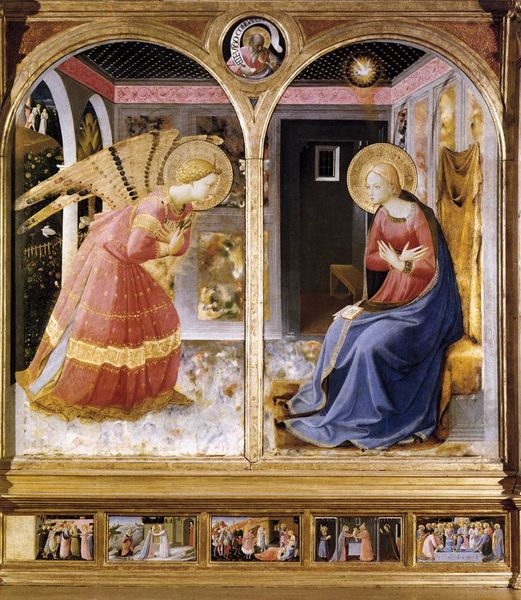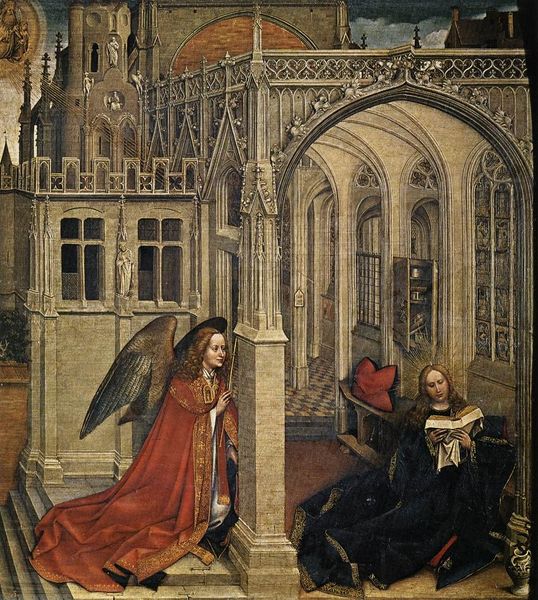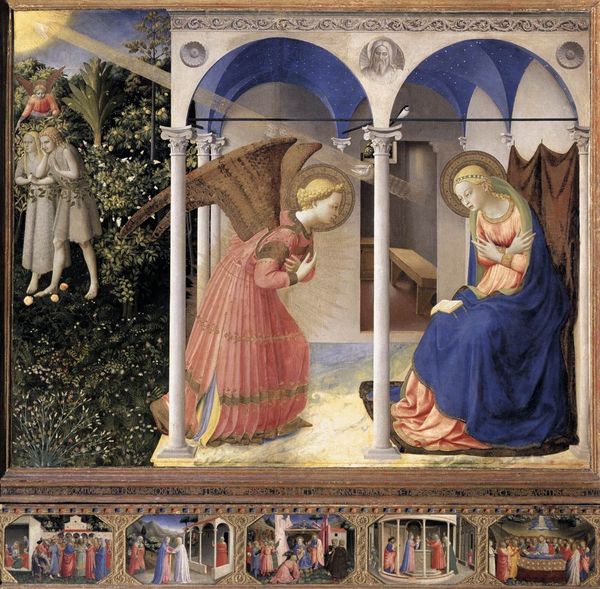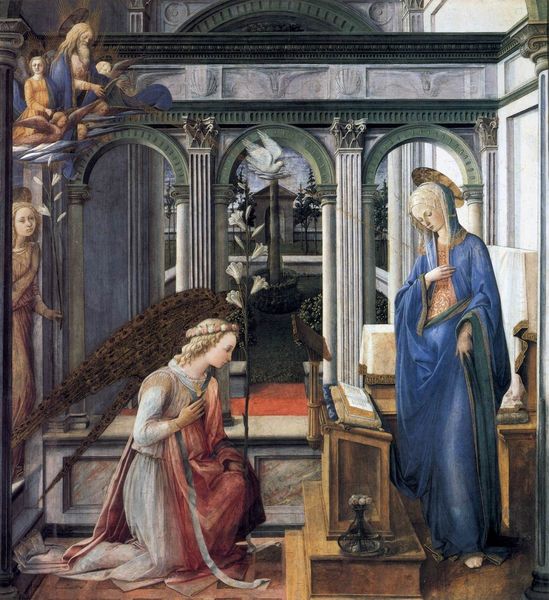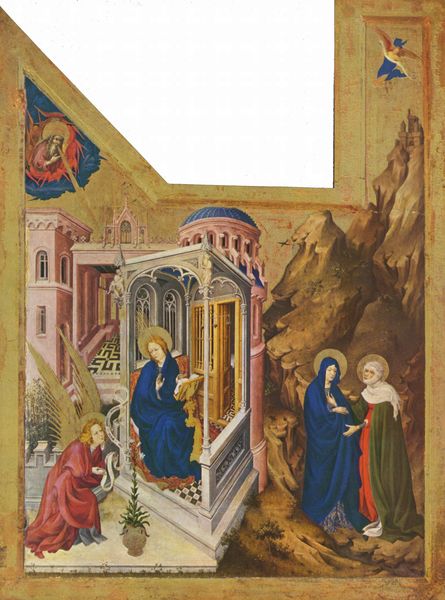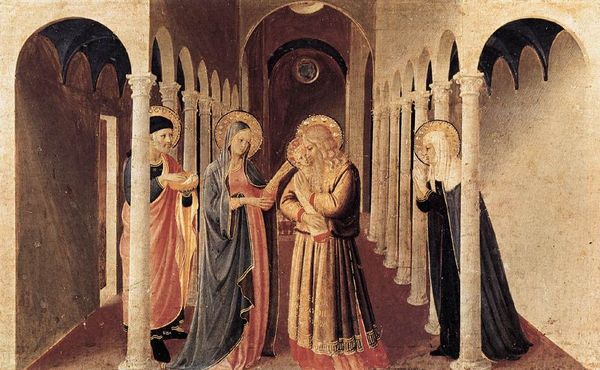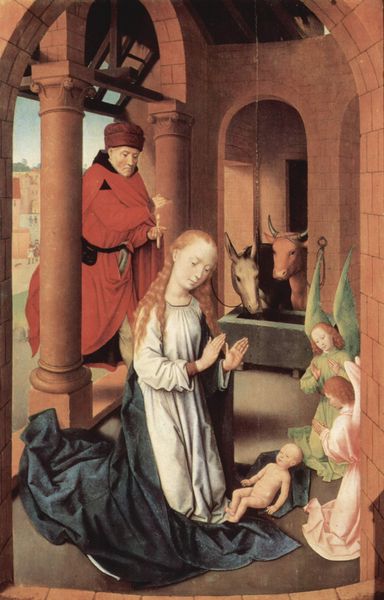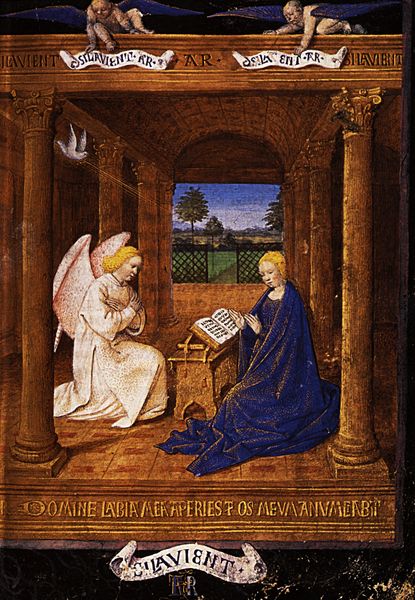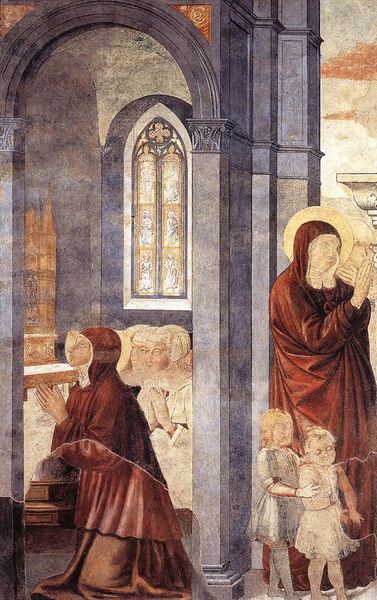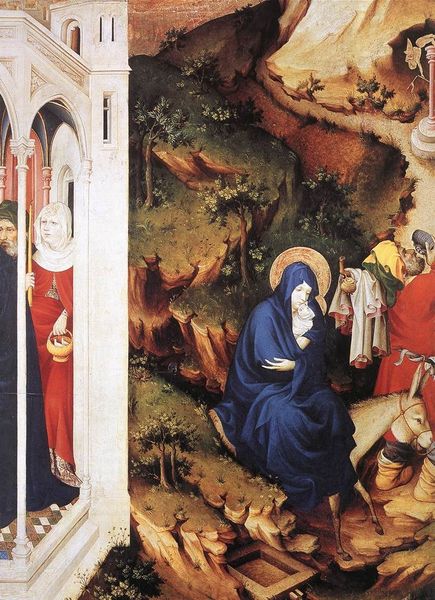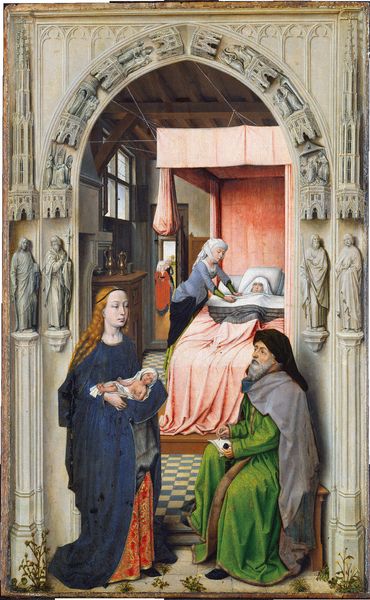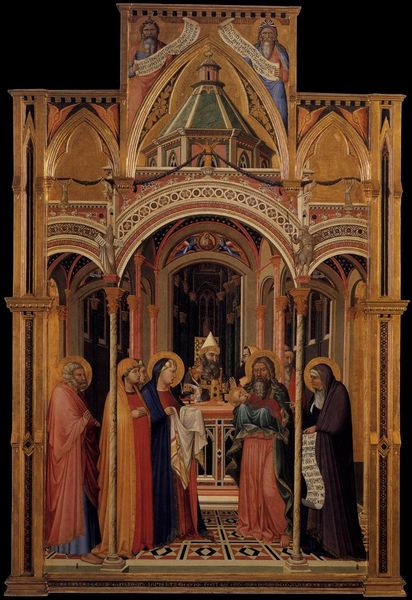
The Annunciation (from Altar of Philip the Bold) 1399
0:00
0:00
melchiorbroederlam
Musée des Beaux-Arts de Dijon, Dijon, France
panel, painting, oil-paint, fresco
#
panel
#
narrative-art
#
painting
#
oil-paint
#
figuration
#
fresco
#
oil painting
#
arch
#
christianity
#
history-painting
#
northern-renaissance
#
early-renaissance
#
virgin-mary
#
angel
Copyright: Public domain
Curator: Here we have Melchior Broederlam's "The Annunciation," a panel painting completed around 1399, originally part of the Altar of Philip the Bold. It resides now in the Musée des Beaux-Arts de Dijon. Editor: It strikes me as remarkably stage-like. The architecture is almost theatrical, with Mary placed within this elaborate, ornamented space, it almost makes you think what is holy and what is material, and which space is she occupying at that very instant. Curator: Exactly! Broederlam uses architecture and interior details to represent a complex spatial arrangement. Consider that patterned floor and the sharp, unnatural perspective. It doesn't strive for perfect realism but rather symbolic representation. And consider the patron, Philip the Bold, his desire for a glorifying representation. Editor: Absolutely, the very politics of display are hard at work here. Even Mary's contained pose is fascinating. There’s an undeniable tension—a negotiation of power dynamics, really—between the divine will, represented by Gabriel's arrival, and Mary's acceptance of a role thrust upon her, you can see it in her reserved gesture towards the book. This resonates so much in current debates surrounding agency and societal expectation. Curator: This intersection is key. We must note how Broederlam’s work operates within courtly patronage. It's worth looking at how, artistically, he's negotiating both the older Gothic influences with an emergent interest in more naturalistic forms we begin to associate with the Renaissance. Editor: How might it reflect the era's views on womanhood? It feels constructed for the male gaze. And as art continues to get repurposed and find a new relevance today, I feel like the dialogue and its original meaning are even more important. Curator: It served to inspire the devotional practices of Philip and his court, that the artist could negotiate a very specific program is very impressive, even today. That's something of a legacy, right? Editor: Right, by contextualizing the artwork and finding new layers of meaning in the contemporary art world, one can embrace historical and social contexts and have new meaningful experiences with this artwork. Curator: Well put! I believe examining the context alongside its enduring visual language enables a much deeper exploration of "The Annunciation".
Comments
No comments
Be the first to comment and join the conversation on the ultimate creative platform.
